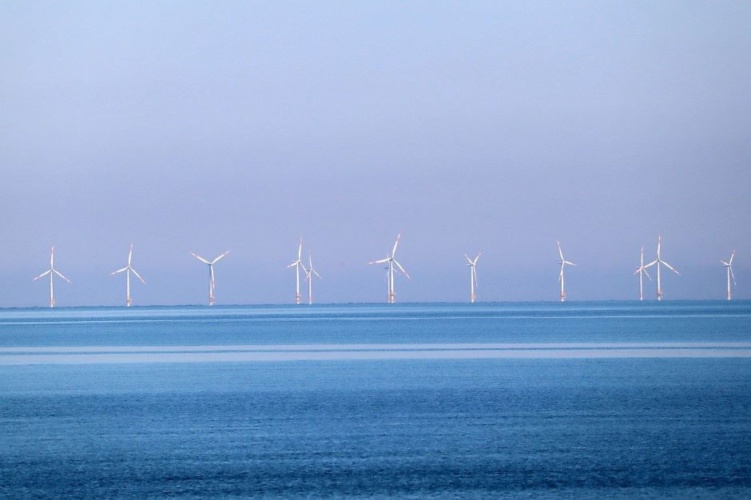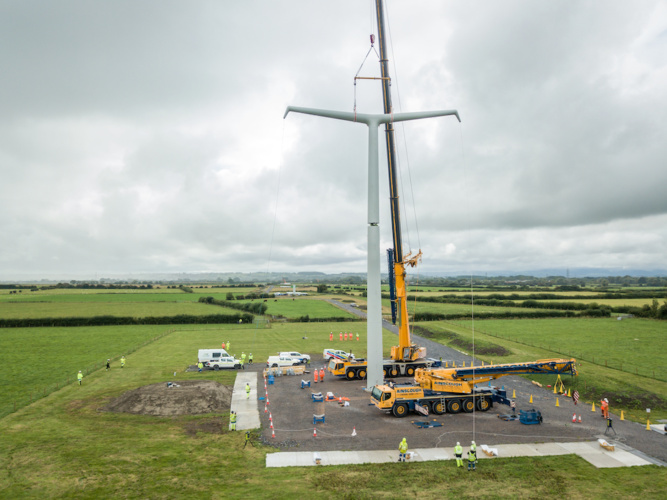Net Zero by 2050: it’s a global goal, and one that the UK government is committed to, with an interim target to cut emissions by 78 per cent by 2035 compared to 1990 levels. Ambitious carbon budgets, underpinned by an Industrial Decarbonisation Strategy and a ‘10 Point Plan for a green industrial revolution’, are all elements of the jigsaw making up the Net Zero 2050 picture.
But the real puzzle, for me, is will the UK strategy work? There are multiple strands to achieving net zero: wind, solar, nuclear, hydro, tidal, geothermal, biomass, and many others. We also need to transport and store this energy, be it in the form of hydrogen, pumped hydro, batteries, compressed gas, thermal reservoirs – the list here is just as long.
MORE FROM ENERGY & ENVIRONMENT
Most experts agree that, to achieve our net zero targets, we will need all of these pieces of the jigsaw, plus others that are yet to be conceived and realised, such as nuclear fusion. So, what will the energy landscape look like in 2050? Where should investors be heading with their booty? And the big questions: Will these technologies be enough? Can we distribute the energy to where it is needed by our homes, industry and transport?
There are multiple strands to achieving net zero
It strikes me that, where we have a free market, driven by city corporates and their shareholders, decisions will be made on a financial basis with little consideration as to whether the ‘whole picture’ provides the solution we require. Yes, the government can offer grants, incentives and realistic carbon taxes, to try to shape the landscape but, in a free market, they can only influence, not direct.
Whilst some might see it as a regressive move, I can see a need for a body similar to the old Central Electricity Generating Board (CEGB), which was finally dissolved in 1990. Someone needs to start assembling the jigsaw of power-producing technologies, storage and distribution, to see how many pieces there are, how big they need to be, and how they need to be arranged to achieve Net Zero in 2050. At present, the strategy appears to be to promote ‘green generation’ as much possible, where we can (offshore wind winning the prize at the moment), and hope that, by the end of it all, we’ll achieve our goal. I don’t think that is enough.

In essence, we need two crystal balls. The first, to show us how much power we will need in 2050 and beyond, and in what form that power will be required. And the second to show how that power will be produced, stored and distributed. But we really need to get looking into these crystal balls now, because these are the kind of visions we will need to inform the actions we are taking to deliver Net Zero.
Maybe we should start with what we can’t do? We can’t use the existing electricity grid for charging the expected number of electric cars or heating houses. There is just not the grid capacity. So we either need to increase capacity, or change the way we distribute and use electricity. Perhaps local smart grids are the answer? These may work well for rural communities, but not for larger conurbations. There is a similar problem with the gas grid. Even at today’s usage, if we were able to replace methane with hydrogen, the national gas grid capacity would fall short by a factor of three. Again, do we invest in a larger capacity grid or use gas in different ways?
Can we distribute the energy to where it is needed by our homes, industry and transport?
Heating our aging housing stock is another piece of the jigsaw that we need to fit into our picture. Many of our houses are thermally inefficient. It may be difficult to make them thermally efficient, but they can, and should, be improved. Reducing energy consumption is the low-hanging fruit on the Net Zero tree, and we should be taking the opportunity to harvest it while we can. Heat pumps are offered as a solution to our home energy challenges as they offer tremendous efficiency, up to 4KW of heat for 1KW of electricity. But you need a thermally efficient house or a massive heat pump for the majority of our housing stock, making their use impractical for many. Air sourced heat pumps also struggle below minus five degrees Celsius – just when you really need them to work.
Now, if our jigsaw were not complicated enough. We need, throughout transition, to maintain the delicate trilemma of safety, security of supply and affordability. To achieve the latter requires the general public to put their collective shoulders behind ‘net zero’. It’s going to involve eye watering investment and higher bills for both industry and the public. They say everyone has their price, but what is that price? And how do you value the pound in your pocket against an environmental catastrophe that is unlikely to severely affect the generation currently holding the purse strings? It’s a big ask.

You may think from reading this that my glass is half empty – not so! Technology is moving so fast that I believe the jigsaw can be completed, and that there will be enough puzzle pieces to fill our Net Zero 2050 picture. But as engineers, this is where our expertise will be essential – we have to work out how many pieces we need, and what size they are. What we haven’t got, is a picture on the jigsaw box lid to guide us to the solution. We need a modern-day CEGB equivalent, a body that can work with industry, academia, suppliers and wider society across both generation and storage to share the bigger picture – to show us that puzzle box lid – so we can see our work, collectively, is helping to fit together these pieces.
Undoubtedly, the picture will change and evolve with time, as new innovations and technologies are developed, and some of the pieces will need to be rearranged but, working together, we will be further towards completing our Net Zero picture than as separate pieces spread about the table. For engineers, this is probably one of the most exciting challenges we will ever face, but solving puzzles is what makes us tick!
Gary Lock, Frazer-Nash Consultancy











Water Sector Talent Exodus Could Cripple The Sector
Maybe if things are essential for the running of a country and we want to pay a fair price we should be running these utilities on a not for profit...